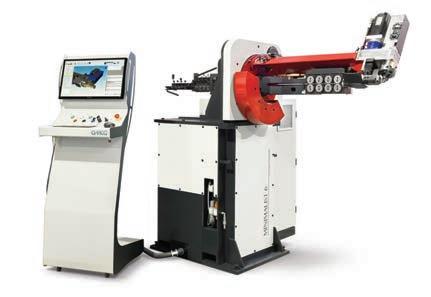
2 minute read
Fiber Watch
Fiber Broadband Association: fiber broadband is the winner
Below are excerpts from a White Paper— The Market Has Spoken— from the Fiber Broadband Association that spells out its perspective about optical fiber technology.
Over the past quarter century, the technology delivering broadband has evolved from dial-up modems to DSL to Cable HFC to FTTN to FTTH. ... Fiber broadband has emerged as the clear winner because it is the only technology that makes technological and economic sense.
Over the past 25 years, special interest groups have lobbied policy makers to ensure broadband subsidies were “technology neutral.” This stance had credibility when bandwidth requirements were substantially lower than today’s needs and copper-based networks could provide basic level service without significant rationing. ... In broadband, it is clear that copper technologies such as dial-up and DSL have fully exhausted their runway.
The cable industry has done an excellent job over time with DOCSIS to extend the runway of Hybrid Fiber Coax (HFC) networks. However, HFC is quickly reaching the end of the upgrade line with “Node + 0” architectures, which require extensive upgrades that will result in a tipping point to Fiber-To-The-Home, especially considering that HFC networks have at least 2x higher annual maintenance costs than FTTH. Geostationary Satellite solutions historically have provided poor broadband performance and high latency. While LEO Satellites strongly outperform Geo-Stat Satellite solutions for both speed and latency, they ultimately are bandwidth limited and best suited for niche applications.
While a few short decades ago, our communications were largely fixed (stationary), the market has shown that Americans enjoy mobility. ... While some have advocated that wireless phones have the potential to become a substitute for fixed broadband, the market shows that there has been a steady decline in the use of smartphones as a primary broadband device ... declining from 20% in 2018 to 15% in 2021.Commercial issues such as Data Caps, a form of rationing, limit the use of wireless broadband.
Users with capped or throttled broadband use 20x-30x less broadband than users with uncapped broadband and 37% of subscribers don’t use streaming media because they fear going over their data caps. Due to the combination of commercial capacity challenges and lower performance (versus fiber), the market views wireless primarily for mobility applications. ... In short, the market has chosen fiber for critical infrastructure and wireless for mobility.
The White Paper, and others can be found online at www.fiberbroadband.org.
Specify Izory®HD to extend maintenance cycles, reduce costs & drive wire quality
follow us:












